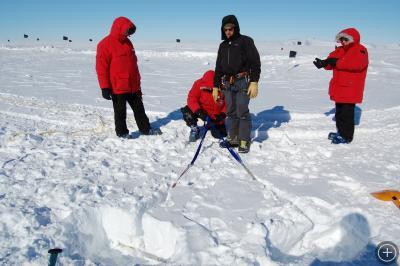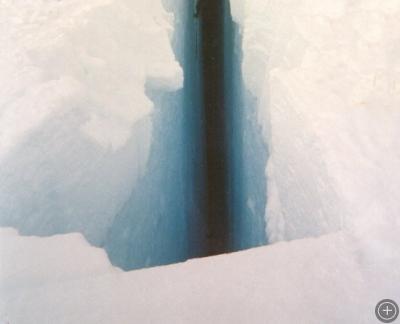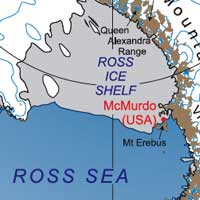Don’t Fall in That Crack
MCMURDO STATION, ANTARCTICA– Imagine yourself driving a snowmobile in bone-chilling cold, upon a windswept snowfield, in Antarctica, your body is weary and you look forward to collapsing into your sleeping bag. Suddenly, the snowmobile in front of you, to which you are roped, disappears from view! You immediately stop and jam into reverse, because you know your snowmobile can stop the fall. Now the rope is tensioned and the person is dangling from the rope, out of view, and they are likely injured or worse. Also, you know it might take days or a week for any rescue professionals, so it is up to you to extract your friend from the crevasse. What do you do?
That is the scenario we prepared for in our Snowcraft II course or Crevasse Rescue course. Crevasses occur in actively moving ice when the ice is stretched and because the ice in Antarctica is extremely thick, crevasses can be hundreds of feet deep. When our team is out in field, we plan our snowmobile travel to avoid crevasses, but it is always smart to be prepared for any accidents that may happen.
We began the day by getting fitted for harnesses and practicing knot tying and general concepts in setting up a crevasse rescue. We learned that by using a system of pulleys and prussiks (which is a special kind of knot used to grip climbing rope), one person does not have to be very strong to lift someone out of a crevasse.

Mountaineer instructor Danny Uhlmann shows the team how to properly set a snow anchor, one of the first steps in initiating a crevasse rescue. The Under the Glaciers team consists of University of California Santa Cruz Professor Slawek Tulaczyk, University of California Santa Cruz graduate student Jake Walter, University of Chicago undergraduate student Saffia Hossainzadeh, and Northumbria University Professor John Woodward.
After lunch, we drove out to the “crevasse simulator, ” which is a pit that has been dug into the snow on the Ross Ice Shelf, near the site of our Snowcraft I course or more fondly known as Happy Camper School, which we completed earlier in the week. Here, we practiced some of the techniques, we learned indoors, including that you can anchor someone using snow! We got the chance to apply them outside and everyone got lots of practice running through scenarios with our instructor, Danny Uhlmann.
To highlight the importance of these trainings, our camp is so remote and far away from any established bases, it could take a search and rescue team multiple days to reach us in the event of an accident. So we have to be self-sufficient and it is our hope that we will never have to use any of the techniques that we learned in this course. When you come down to the ice, you realize that scientists from all fields and the people who support them here risk their lives daily in Antarctica, in order to pursue their studies of this place, the last continent.

 No comments
No comments 








